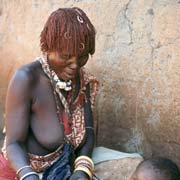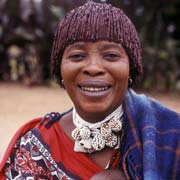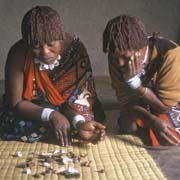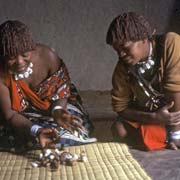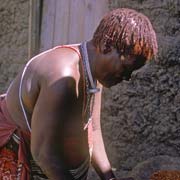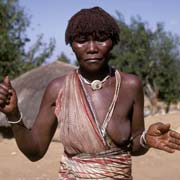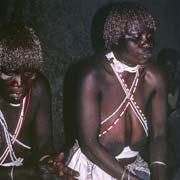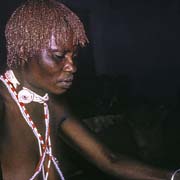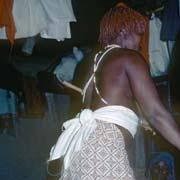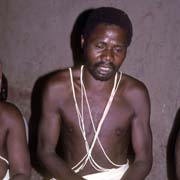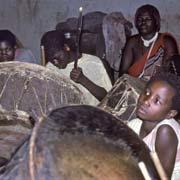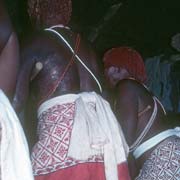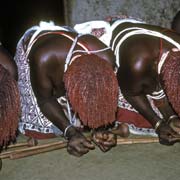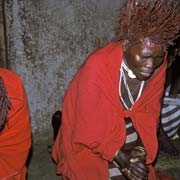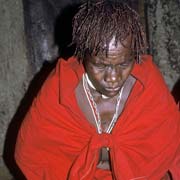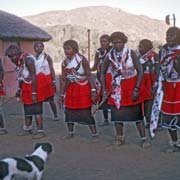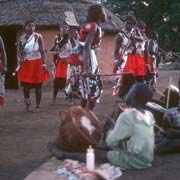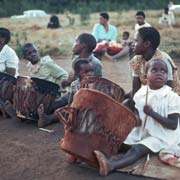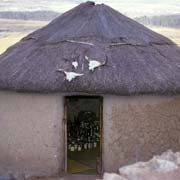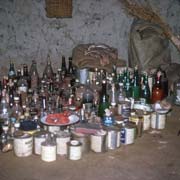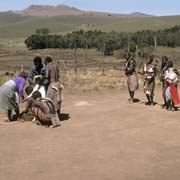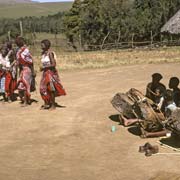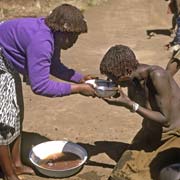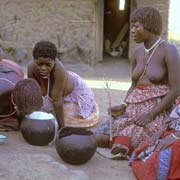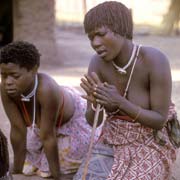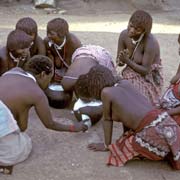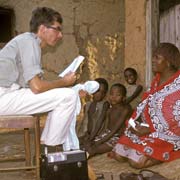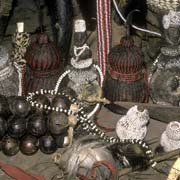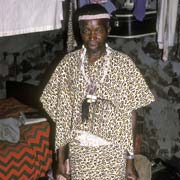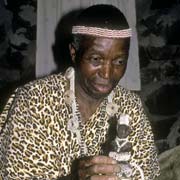Photos of Sangoma and iNyanga - traditional healers of Swaziland
Sangoma and iNyanga - traditional healers of Swaziland
A very important member of Swazi society is the "sangoma" or diviner whose role it is to find the cause of misfortune or disease, prescribe actions to rectify it and prepare medicine to cure illness. Although often misunderstood by Europeans and given the epithet "witchdoctor", they would more accurately be described as "witchfinder".
you may then send it as a postcard if you wish.
Witchcraft is an accepted fact, something bad people can do to harm someone else and when, in the colonial days, the European administration made it an offence to be a sangoma or wear the distinguished red-ochred "siyendle" hairstyle of one, "witchcraft flourished as never before" as the very people who could fight it had been stopped doing so.
This was rectified at Independence and there are now various "schools" where learner "tangoma" (plural of "sangoma") undergo "kutfwasa", a process that may take up to a year or longer, to learn their craft. The small homestead of Bethany, near Matsapha in central Swaziland was such a "school", led by LaMabuza, a friendly lady who had about a dozen or more learners staying with her. During this time they had to observe various taboos: they were not allowed to quarrel, shake hands with anybody and have sexual relations, among others.
One of the skills the sangoma had to learn is "Throwing the Bones" ("ematsambo"); a collection of small bones, to which were added a variety of other small objects like beads, dice etc. was thrown on a mat and from the way they would fall the solution to a problem could be divined. And almost every evening there was drumming in "indumba", the small house that was the learner's base and they would enter, in a trance, grunting and sweating, dance to the drums and communicate the messages of the "emadloti" or ancestral spirits.
Then they would drape a red cloth over their shoulders, the drum rhythm would change to that of the "emaNdzawe" (or Ndau, a people living in Mozambique and Zimbabwe): long ago, a group of Swazis, marauding in the area had come across some cattle belonging to those emaNdzawe; they had been told not to kill those as these cows were reserved to be offered to the ancestral spirits. The Swazi ignored this, killed the cattle and also killed those people daring to oppose them. Since that time the emaNdzawe spirits have haunted them and they need to be placated in these ceremonies. The tangoma were vigorously shaking to the rhythm of the drums and would then speak with a strangled voice in a language that was said to be an old form of Ndau, a language they didn't know when out of the trance.
A Sangoma or diviner usually starts out as a normal person who, through dreams or visions that are interpreted by another sangoma as indicating that his or, more frequently, her (in Swaziland there are far more women tangoma than men) ancestral spirits are calling him or her to become a diviner. Although the "calling" is often resisted at first, because a sangoma is distinguished by her appearance with her hair in "siyendle" style, decorated with small bottles of traditional medicine and subject to many taboos, it gradually becomes irresistible and she becomes a learner sangoma in the household of a senior sangoma.
She learns to use the traditional medicines, "umutsi" and the ceremonies associated with it. These medicines are mostly made from roots and ground bark but sometimes animal parts are used as well. Sometimes the tangoma perform a ritual in which medicine, put in water in a clay pot, is stirred with a special stick so that it forms a froth; they then "eat" a little of the froth and apply it to their face and on top of their head. The candidate is initiated as a fully qualified sangoma during a two-day ceremony called "kuphotfulwa" that concludes their "iNtfwasa", their training.
There is also the "inyanga" (plural: tinyanga), who is mostly a herbalist and does not usually perform rituals that are common to the "sangoma". Often men, they have a large variety of "umutsi", traditional medicines, kept in often artistically carved vessels. The costume of the inyanga may also be different, especially among those men whose ancestry is from outside the country.
See also: Ntfwasa graduation Ceremony, 1972 - Day 1 and Day 2, Ntfwasa graduation Ceremony, 1973, Video iNtfwasa Ceremony Day 1 and Day 2 and an explanation of the sangoma ceremonies.



